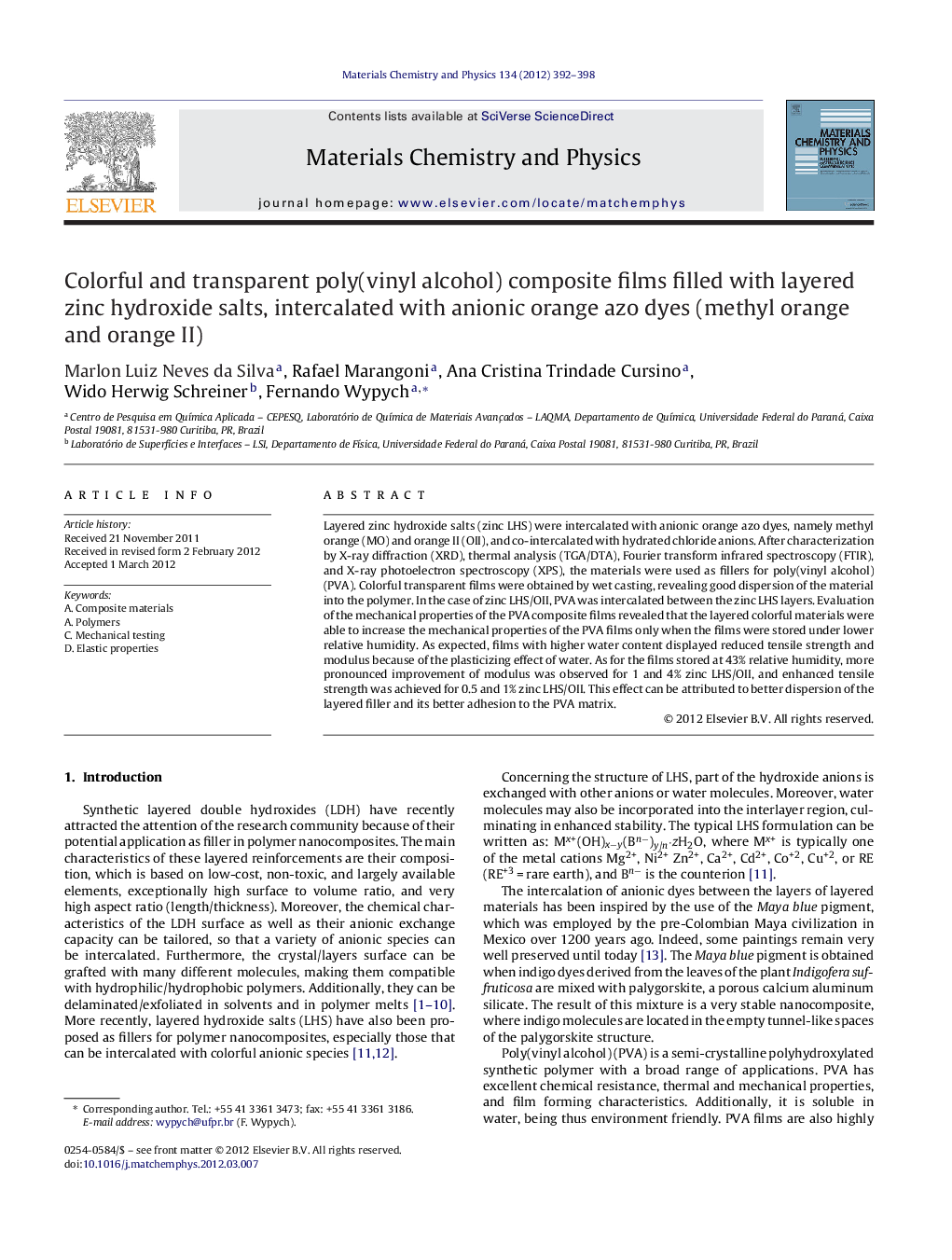| Article ID | Journal | Published Year | Pages | File Type |
|---|---|---|---|---|
| 1524030 | Materials Chemistry and Physics | 2012 | 7 Pages |
Layered zinc hydroxide salts (zinc LHS) were intercalated with anionic orange azo dyes, namely methyl orange (MO) and orange II (OII), and co-intercalated with hydrated chloride anions. After characterization by X-ray diffraction (XRD), thermal analysis (TGA/DTA), Fourier transform infrared spectroscopy (FTIR), and X-ray photoelectron spectroscopy (XPS), the materials were used as fillers for poly(vinyl alcohol) (PVA). Colorful transparent films were obtained by wet casting, revealing good dispersion of the material into the polymer. In the case of zinc LHS/OII, PVA was intercalated between the zinc LHS layers. Evaluation of the mechanical properties of the PVA composite films revealed that the layered colorful materials were able to increase the mechanical properties of the PVA films only when the films were stored under lower relative humidity. As expected, films with higher water content displayed reduced tensile strength and modulus because of the plasticizing effect of water. As for the films stored at 43% relative humidity, more pronounced improvement of modulus was observed for 1 and 4% zinc LHS/OII, and enhanced tensile strength was achieved for 0.5 and 1% zinc LHS/OII. This effect can be attributed to better dispersion of the layered filler and its better adhesion to the PVA matrix.
Graphical abstractFigure optionsDownload full-size imageDownload as PowerPoint slideHighlights► Zinc hydroxide salts were successfully intercalated with anionic orange azo dyes. ► The anionic dye was co-intercalated with hydrated chloride anions. ► The orange materials were used as fillers for poly(vinyl alcohol). ► Transparent, homogeneous, colorful PVA films were obtained by wet casting. ► Some composites stored at lower humidity exhibited improved mechanical properties.
